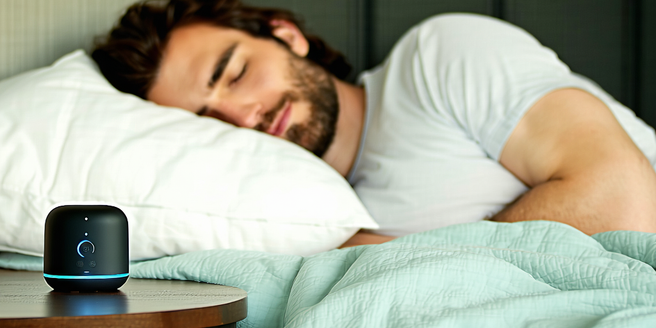Non-intrusive Sleep Trackers

1. Understanding Non-Intrusive Sleep Tracking Technology
Non-intrusive sleep tracking technology allows monitoring of sleep patterns without the need for uncomfortable wearables or intrusive devices. These devices typically use advanced sensors and algorithms to collect data on various sleep metrics such as sleep stages, duration, and disruptions. By placing these trackers under the mattress or using bedside devices, they can capture movements, breathing patterns, and even heart rate throughout the night. This advancement offers a seamless experience for users who seek to improve their sleep quality without altering their sleep environment. The data collected is usually analyzed and presented via an app that provides insights and recommendations, making it easier to understand sleep behaviors and make necessary adjustments for better rest. As this technology evolves, privacy and accuracy remain central to its development and adoption.
2. Key Features of Modern Sleep Trackers
Modern sleep trackers boast an array of sophisticated features designed to provide comprehensive insights into sleep quality. These features often include motion detection, heart rate monitoring, and respiration tracking, all of which contribute to understanding sleep cycles and disturbances. Some advanced models offer additional functionality like snore detection, environmental monitoring (temperature and noise levels), and even smart alarms that wake users during light sleep phases. Integration with smartphones through dedicated apps allows for detailed analysis and personalized sleep coaching. Multiple user profiles enable family sharing, catering to household-wide sleep tracking needs. Ensuring data accuracy and providing user-friendly interfaces are critical aspects that manufacturers focus on. These features empower users to make informed decisions about their sleep hygiene, facilitating improvements and fostering healthier sleep routines.
3. Benefits of Using Non-Intrusive Sleep Trackers
Using non-intrusive sleep trackers presents multiple benefits for individuals interested in enhancing their sleep quality without the hassle of wearing uncomfortable devices. These trackers provide detailed insights into sleep patterns, helping users identify and address issues such as insufficient sleep duration, frequent awakenings, or restless nights. By providing data-driven recommendations, they enable users to optimize their sleep environments and habits. Additionally, non-intrusive sleep trackers are often more comfortable as they can be discreetly placed under the mattress or on the bedside, ensuring a natural sleeping experience. This convenience makes it easy for individuals to consistently monitor their sleep and implement positive changes. Furthermore, accurate sleep monitoring can contribute to better mood regulation, increased productivity, and overall improved health and wellbeing.
4. Comparing Popular Non-Intrusive Sleep Tracker Models
When comparing popular non-intrusive sleep tracker models, several factors come into play including accuracy, features, and ease of use. Models like the Withings Sleep Analyzer focus on accurate data collection on sleep cycles, snore detection, and heart rate monitoring, offering a thorough sleep analysis. The Google Nest Hub combines sleep tracking with smart home features, providing visual data representations alongside environment monitors like light and sound. Meanwhile, the S+ by ResMed emphasizes breath and motion detection without requiring any body contact, offering insights directly to your smartphone. Key considerations when choosing include the app’s usability, the level of detail each tracker provides, and the comfort level with the installation process. Deciding on a model depends largely on individual sleep needs, preferences for additional features, and budget constraints.
5. Tips for Choosing the Right Sleep Tracker for You
Selecting the right sleep tracker involves evaluating your personal sleep goals, budget, and preferred features. Begin by identifying your main objectives, such as tracking sleep stages, detecting disturbances, or understanding environmental factors. Consider the level of detail and type of data you wish the tracker to provide. Assess different models’ comfort and ease of use, particularly if opting for a non-intrusive device. Evaluate app functionalities and user interfaces to ensure a smooth experience. It’s also vital to verify the reliability of the tracker’s data collection and analysis capabilities. Additionally, reviews and comparisons can offer insights into other users’ experiences. Ultimately, choosing a tracker that aligns with your lifestyle and sleep objectives will provide the most value, helping you to achieve better sleep and overall wellbeing.